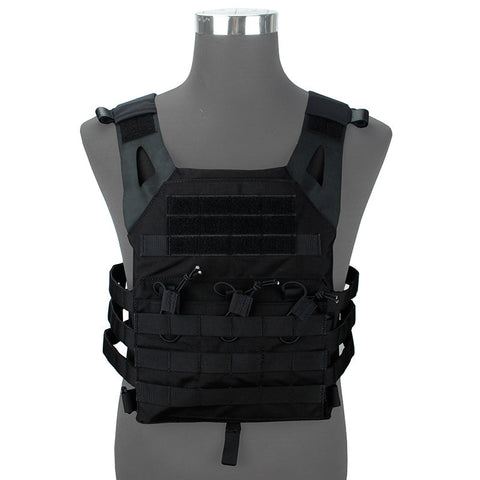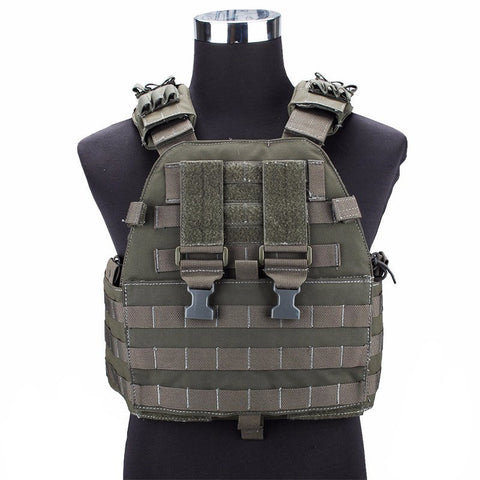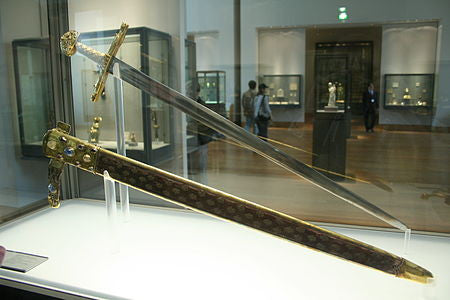Anything you do take should be easy to use, lightweight and should take up as little space as possible. Enter the paracord bracelet – also known as a survival bracelet. It’s so small and light, you won’t even notice it’s there most of the time, but this tool can be a true lifesaver, so it’s worth looking into getting one.
With an almost unlimited number of ways to use a paracord bracelet, it’s a great accessory and can be worn comfortably around the wrist until you need it.
What is a paracord bracelet?
A paracord bracelet is a long piece of parachute cord woven into a bracelet.
Paracord – or parachute cord – is a highly durable type of nylon rope. Originally used for parachutes during WWII, it is now a common item in military and aeronautical circles. Yup, even NASA use this type of rope in space!
It’s also made its way to hikers and survival enthusiasts, as it is made of a durable, strong and lightweight material and can be used in more ways you can imagine, thanks to its strength and highly versatile nature.
The rope is a so-called ‘kernmantle rope’. Several strands of thinner rope run through an external flexible sheath. This allows the rope to have huge tensile strength, provided by the thinner ropes, while the sheath provides protection from abrasion to the sides. The component parts of the rope can be used separately, for instance to increase the length of your rope, making for an extremely versatile piece of kit.
The most commonly used type of paracord is the 550 cord. This type has a minimum break strength of 550 lbs. (250 kg) and holds seven inner strands. This is the material used for most paracord bracelets as well and will not let you down when you find yourself in a hard spot during a hike.
A paracord bracelet is made up of a long piece of knotted paracord, with a clasp on either end to secure it around the wrist.
For the average outdoorsy person, a paracord is a piece of equipment used mostly in emergencies, or at least only in very specific situations. You wouldn’t expect to need a paracord every time you step out of the house, but you do want it handy and ready to use in case you need it.
Since taking large quantities of paracord with you can seem a bit redundant for most trekkers – especially when going on shorter walks – you should be able to carry it in an easy and convenient way.
That’s why the paracord bracelet was invented.
It is a highly efficient way of carrying a paracord with you. You won’t be bothered by the bracelet in any way while wearing it, but you’ll always have it available for almost immediate use you can unravel the cord whenever you need it.
What can I do with a paracord bracelet?
Apart from being a cool accessory, the paracord bracelet’s main aim is to be turned into paracord. That’s right, in order to use it, you’ll have to unravel the bracelet, something that’s not necessarily irreversible, but at the same time probably not something you’d want to do every day.
That’s why a paracord bracelet is more suitable for the casual trekker, who won’t need paracord for every hike, but wants to keep one with them for emergencies or unexpected situations. Alternatively, if you do go on a longer hike, a paracord bracelet can also be a great back-up to a larger length of paracord you carry around with you whilst hiking.
You’ll have to undo the paracord bracelet by either cutting the paracord near the end, or by undoing a clasp, depending on the paracord bracelet and the way it was knotted. Then, you’ll be able to use the full length of paracord, or cut it into the desired length.
The bracelet itself is usually around 20 cm to 25 cm long, and some can be adjusted to the wearer’s wrist. Most paracord bracelets are made up of about 3 m of paracord, depending on the type of knotting and the size of the bracelet. You can tie the inner strands of the paracord together to create a longer rope if needed.
Make sure to have a look at the instructions that came with your paracord bracelet before trying to unravel it. The correct way to unravel the bracelet depends on how it was knotted and what type of clasp was used. If you cut the paracord in the wrong place, you may end up with pieces of cord that are too short to use.
There are different types of clasps and some paracord bracelets come without a clasp altogether. We would advise to get a paracord bracelet with a clasp. It is much easier and quicker to put on and take off and sturdy clasps prevent the bracelet from unravelling itself when you don’t want it to.
OK, now it’s unravelled. What can I actually do with the paracord?
Once you unravelled the paracord, it has many different uses. Have a look below:
Survival
In case you didn’t plan on staying outdoors overnight, but you find yourself lost and unable to continue for the day, you’ll need to build yourself a shelter. Paracord can help here, tying together branches and covering them in branches or a tarp. It is best to use the inner strands for this type of work, as they are thinner and you’ll have the exterior sheath left for other purposes.
Hunting and fishing
Whether you took plenty of your own food, or planning on hunting, a paracord can be of help in many situations.
In case you need to store food overnight and keep it out of reach from hungry animals, you can use the ‘bear bagging’ technique. Essentially, you use a long piece of paracord to tie your food to the branch of a tree. Tie together pieces of inner cord to extend your rope.
Paracord can also be turned into a great fishing line by undoing one of the inner strands of paracord. The strands are made up of very thin but strong strings, that make for excellent fishing line. Attach a hook and find some bait and you’ll be munching on some fish in no time. No rivers nearby? Use a paracord, rocks and sticks to set up a snare to catch game.
Medical
When you’re out in the wild and someone needs urgent medical attention, it is best to get them back to safety as soon as possible. In cases where you need to act fast, a paracord might help to keep your fellow hiker alive and conscious until you reach civilisation.
If you or a fellow hiker cut themselves and need suturing, paracord can help. Of course, this is no replacement for professional medical care, but it can stop the bleeding and buy you a few hours to get to a hospital. Again, unravelling one of the inner strands would leave you with string that’s thin enough to use for suturing.
You can also make a tourniquet out of paracord. It is not an ideal solution, as the pressure from paracord is likely to crush tissues without adequately stopping the blood flow. It should only be used as a last resort if no other options are available.
Next to the above applications, there are infinitely more. This is the beauty of paracord: it is so adaptable that it is useful for any trekker, whether you are a casual hiker, or a seasoned survival specialist.
Putting the paracord back together
Once you’re done using the paracord, and in case you haven’t removed the inner strands, you can put the bracelet back. It does take some practice to do this, so make sure you try it at home first. In our experience, you need to have unravelled and re-tied the bracelet at least ten times to be comfortable enough to do it under any circumstances. Familiarise yourself with the correct type of knot – dozens of types exist – and you’ll be set to go!
Alternatively, you can simply pack the undone paracord in your bag and redo it after you get home. Some manufacturers offer to put the bracelet back together for you, if you send them the intact paracord and clasps. They may charge a small fee for this service, though.
What to look for in a paracord bracelet
As there are many different types of paracord bracelets, you could be overwhelmed by the options, so have a look at the buying advice below.
For novice hikers, a simple paracord bracelet would suffice, with a comfortable clasp system made of high-quality nylon. We would advise to get a bracelet that can be adjusted in size, so it makes for a snug fit around the wrist, without being uncomfortable.
Some manufacturers will offer different sizes, eliminating the need for an adjustable clasp. In any case, you should make sure it is tight enough, so it won’t fall off while you’re climbing over a fallen tree, or swimming in a river.
Do make sure the quality of materials is high-grade and look for bracelets made of 550 cord, as described above. After all, you may need to use the paracord to secure your tent or pull someone out of quicksand, in which case strength is paramount. Always buy from a reputable retailer and don’t hesitate to ask them about the sourcing of their products. It’s about you and your fellow hikers’ safety, so it’s important to take care when selecting a paracord bracelet.
For advanced trekkers, more intricate paracord bracelets are available. These bracelets have additional uses, which could come in handy, especially on multi-day treks. These bracelets can include fire-starters, a camping knife, zip-ties, a tinder wick, and other accessories. As these are all tied to the paracord bracelet, you’ll need more time to unravel the bracelet, should you need to use the paracord. In addition, you may end up with a number of loose accessories that are quite fiddly to transport once they’re no longer attached to the bracelet.
Keep in mind, as with most trekking gear it’s best to always err on the side of simplicity. It’s better to get a high-quality, simple paracord bracelet, than to get one with dozens of extra features that will only get in the way of the paracord’s primary function, which is to be a strong and flexible rope.
Have a look at the paracord bracelets we have on offer here. Different bracelet lengths and clasps are available in a multitude of colours.
So which paracord bracelet should I buy?
To help you choose, we’ve selected five bracelets that we think are the best on the market today.
Genoese Paracord Survival Bracelet

The Genoese Paracord Survival Bracelet is one of the best all-round paracord bracelet. It is made from military grade 550 cord with a contour buckle and is custom made to the right wrist size. Sold in sets of five bracelets.
SMD 550 Red
SMD 550 Red s simple, yet efficient. It is the best value one in our overview. That doesn’t mean it’s low quality, however, as it is made from high grade 550 cord.
Urban Carry Strap

The Urban Carry Strap is undoubtedly one of the most versatile paracord bracelets on the market today and comes with many accessories. It has a firestarter, a Kevlar saw, zipties, a tinder wick and much more. It is pricier than most bracelets, but you’ll get a lot of value from this excellent bracelet.
Pulsar Army
As the paracord bracelet will spend most of its time on your wrist, it needs to be comfortable and should always stay on until you want to take it off. This is where the clasp comes into play. The Pulsar Army‘s metal clasp is an incredibly strong shackle and can be adjusted in size in a few seconds.
Grumpy Goose Rainbow
If you’re looking for a strong, but also fun paracord bracelet, have a look at the Grumpy Goose Rainbow. This bracelet has a strong metal shackle and comes in all colours of the rainbow, making for an exciting and fresh look.
source https://www.bladespro.co.uk/blogs/news/top-5-paracord-bracelets-of-2017






























